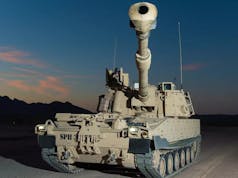A Boeing team, including US Air Force and Naval Air Systems Command representatives, recently completed KC-46 tanker electromagnetic testing.
This testing evaluates the aircraft’s ability to safely operate through electromagnetic fields produced by radars, radio towers and other systems under mission conditions.
Mike Gibbons, Boeing KC-46 vice president and programme manager said:
“The KC-46 tanker is protected by various hardening and shielding technologies designed into the aircraft to negate any effects on the aircraft.
This successful effort retires one of the key risks on the program.”
According to a press release:
“Testing was conducted on the Naval Air Station Patuxent River, Md., electromagnetic pulse (EMP) and Naval Electromagnetic Radiation Facility pads and also in the Benefield Anechoic Facility at Edwards Air Force Base, Calif.
During tests on the EMP pad at Patuxent River, the program’s second low-rate initial production KC-46 received pulses from a large coil/transformer situated above the aircraft. The outdoor simulation was designed to test and evaluate the KC-46’s EMP protection while in flight.
The KC-46A is a multirole tanker that is designed to refuel all allied and coalition military aircraft compatible with international aerial refuelling procedures and can carry passengers, cargo and patients.”
Boeing is assembling KC-46 aircraft at its Washington facility.












And to think if the protectionist politicians hadn’t stuck their Boeing funded oars in the USAF would be flying a fleet of proven A330 MRTT (KC-30) tankers built in Alabama as they wanted. Rather than this hacked out old 767 that delivers 15% less fuel, over a shorter range, doesn’t actually work with wing drogue pylons, and none are in operational use yet. 9 years later.
While we have a fleet of new tankers (regardless of how we pay for them) ordered in 2008 at the same time as the USAF was told to switch to Boeing.